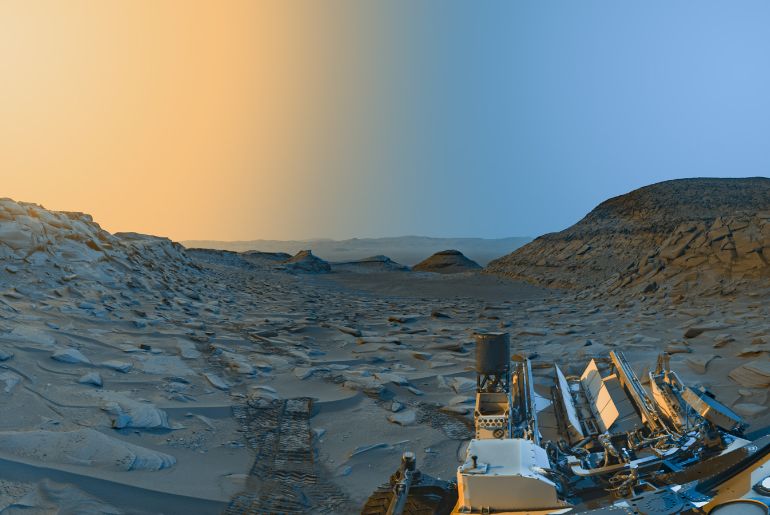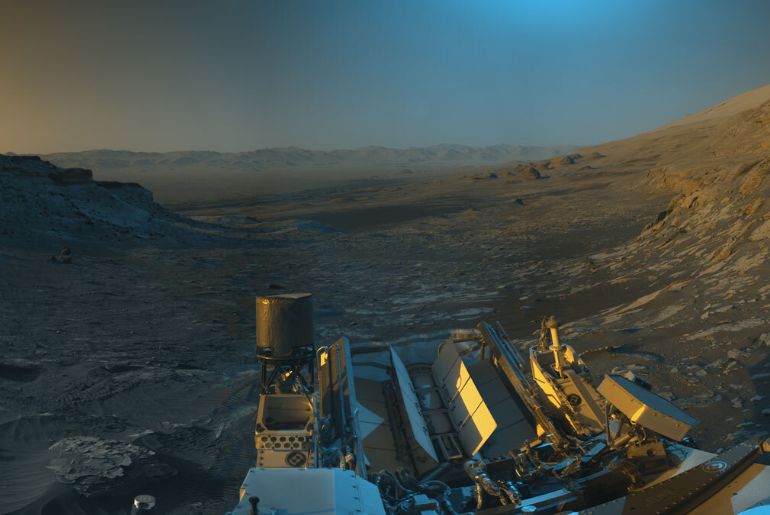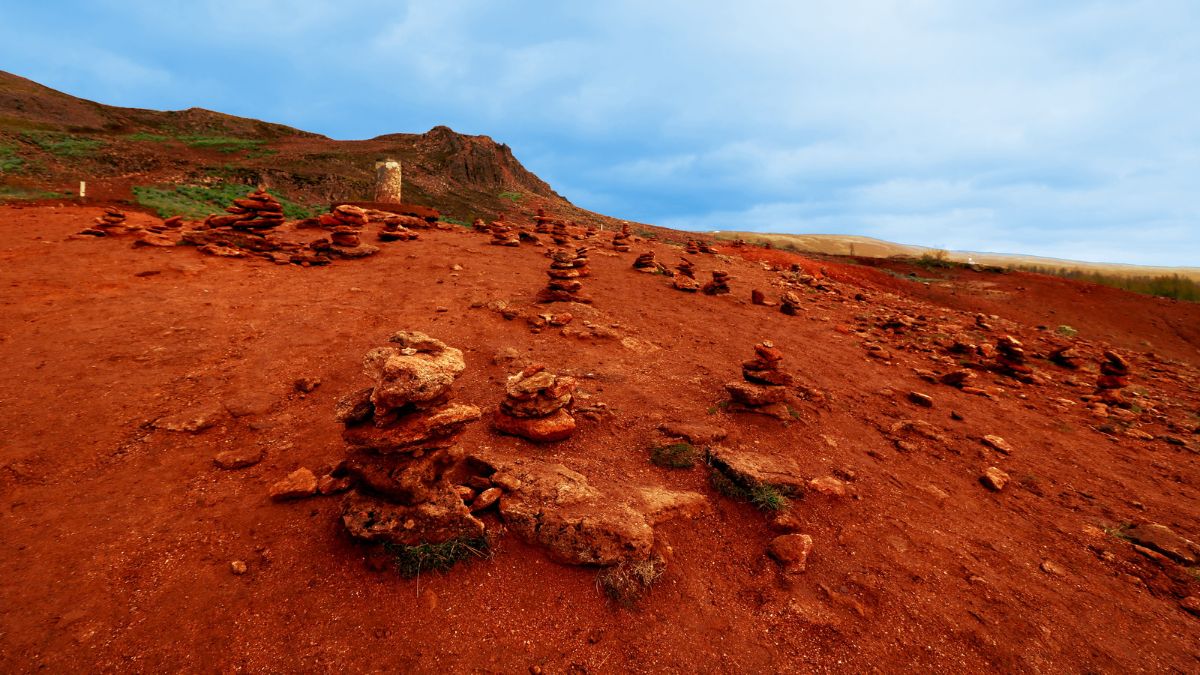Mars, the fourth planet in the solar system, is a mysterious one! Scientists are conducting research and launching satellites to understand it. Recently, NASA, a US space agency, has captured a spectacular view of the landscape and they have shared a postcard! Take a look at this magnificent scenery from Mars!
NASA Shared A Panoramic View Of Mars!

On Tuesday, the US space agency NASA released a stunning panoramic image that showed Mars in both the morning and the afternoon. According to NASA, the images were captured when the rover ascended the foothills of the mountain with a height of 5 kilometres with the Gale Crater.
NASA’s Curiosity Mars completed a software update and captured the last look of “Marker Band Valley” as a postcard. A colour overlay was made to two black-and-white panoramas taken by Curiosity’s navigation cameras to create an artistic rendition of the environment for the postcard. The first image was taken on April 8, 2023, at 9:20 am, while the second image was taken at 3:40 pm, local Mars time.
Also Read: There’s A UFO Hovering Over Middle East & NASA Lets Us In On It!
Similar to a postcard taken by Curiosity in November 2021, parts of the postcard that were taken in the morning and afternoon were given the colour blue, and the remaining portions received the colour yellow.
A Beautiful Image Of The Planet

This resulting picture is eye-catching. In Gale Crater, where the rover has been exploring since its 2012 landing, Curiosity is in the foothills of Mount Sharp, which is 5 kilometres high. Marker Band Valley, a meandering stretch of the “sulphate-bearing region” where the rover unexpectedly found indications of an ancient lake, is visible in the distance beyond its tracks.
According to Curiosity engineer Doug Ellison of NASA’s Jet Propulsion Laboratory, anyone who has visited a national park knows that the scenery changes during the day. This happens especially in the morning. Dark shadows result from capturing two different times of the day because the illumination is coming from the left and the right, much like it would on a stage, but the Sun is being used in place of stage lights.
Also Read: NASA Shares Pic Of Zinnia, The Space Flower! Here Are Its 5 Facts!
It was winter at Curiosity’s location when the pictures were taken, a time of lesser airborne dust, which adds to the depth of the shadows.
Cover Image Credits: Canva (Rep Img)
First Published: June 16, 2023 1:47 PM



